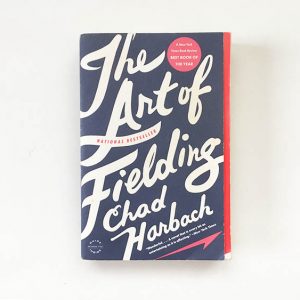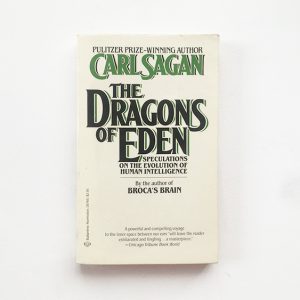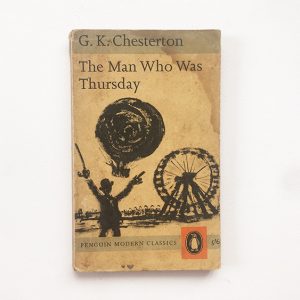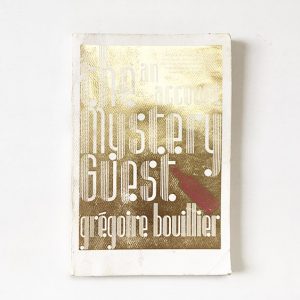Books written in English
ROAR! Now I’ve got your attention, can I interest you in a book of poems about dinosaurs?
Though they went extinct 65 million years ago, dinosaurs are still everywhere. They’re on TV in The Land Before Time, in classrooms and museum collections, but it might still be hard to believe that dinosaurs walked here once. The poets in this anthology bring dinosaurs out of their display cases and into your home, and ask them politely to be careful with the carpet.
This book is approximately for children aged 8+.
Jim Dixon has accidentally fallen into a job at one of Britain’s new red brick universities. A moderately successful future in the History Department beckons. As long as Jim can survive a madrigal-singin weekend at Professor Welch’s, deliver a lecture on ‘Merrie England’ and resist Christine, the hopelessly desirable girlfriend of Welch’s awful son Bertrand.
A rapturous and uproarious collision of East and West, a novel about the dream of love and the love of dreams. Fresh from eleven years in Paris studying Freud, bookish Mr. Muo returns to China to spread the gospel psychoanalysis. His secret purpose is to free his college sweetheart from prison. To do so he has to get on the food side of the bloodthirsty Judge Di, and to accomplish that he must provide the judge with a virgin maiden.
This may prove difficult in a China that has embraced Western sexual mores along with capitalism — since Muo, while indisputably a romantic, is no ladies’ man. Tender, laugh-out-loud funny, and unexpectedly wise. Mr. Muo’s Travelling Couch introduces a hero as endearingly inept as Inspector Clouseau and as valiant as Don Quixote.
This book is a compilation of two Salinger’s novella which was originally published in The New Yorker in 1955 and 1959. It’s two parts that follows the Glass family narratives. Raise High is narrated by Buddy Glass, the second of the Glass brothers, describing Buddy’s visit on Army leave (during World War II, in 1942) to attend the wedding of his brother Seymour to Muriel and tells of the aftermath when Seymour fails to show.
While Seymour: An Introduction is Buddy’s attempt to introduce the reader to his brother Seymour, who had committed suicide in 1948. The story is told in a stream of consciousness narrative as Buddy reminisces in his secluded home. Like others concerning the Glass family, touches upon Zen Buddhism, haiku, and the Hindu philosophy of Vedanta.
After a century of civil strife in Rome and Italy, Virgil wrote the Aeneid to honour the emperor Augustus by praising Aeneos – Augustus’ legendary ancestor. As a patriotic epic imitating Homer, the Aeneid also set out to provide Rome with a literature equal to that of Greece. It tells of Aeneas a survivor of the sack of Troy, and of his seven-year journey: to Carthage, where he fell tragically in love with Queen Dido; then to the underworld, in the company of the Sibyl of Cumael and finally to Italy, where he founded Rome. It is a story of defeat and exile, of love and war, hailed by Tennyson as ‘the stateliest measure ever moulded by the lips of man.’
It is 1939, Nazi Germany. The country is holding its breath. Death has never been busier and will become busier still.
By her brother’s graveside, Liesel Meminger finds her life changed when she picks up a single object, partially hidden in the snow. It is The Grave Digger’s Handbook, left there by accident, and it is her first act of book thievery. So begins a love affair with books and words, as Liesel, with the help of her accordion-playing foster father, learns to read. Soon she is stealing books from Nazi book-burnings, the mayour’s wife’s library, wherever there are books to be found.
But these are dangerous times. When Liesel’s foster family hides a Jewish man in their basement, Liesel’s world is both opened up and closed down.
In superbly crafted writing that burns with instensity, award-winning author Markus Zuzak has given us one of the most enduring stories of our time.
Dr. Carl Sagan takes us on a great reading adventure, offering his vivid and startling insight into the brain of man and beast, the origin of human intelligence, the function of our most haunting legends — and their amazing links to recent discoveries. By recent, we’re referring to the year of 1977 when the book was published, and received the Pulitzer Prize.
Some science has evolved ever since, but Sagan’s great mind leading us to understand some complex scientific concepts of the era in a palatable way, made the book a great read to understand how far we’ve gone understanding the universe.
This hilarious extravaganza presumes the existence of a secret society of revolutionaries sworn to destroy the world. There are seven members of the Central Anarchist Council who, for reasons of security, call themselves by the names of the days of the week — Sunday, Monday, and so on. But events soon cast a doubt upon their real identities, for Thursday (the Man Who Was Thursday) is not the passionate young poet he appears to be, but a Scotland Yard Detective. Who and what are the others? Chesterton unravels the fantasy in his own inventive and exuberant way and then uses this nightmare of paradox and surprise to probe the mysteries of human behaviour and belief.
This book is a 1962 copy.
One gloomy Sunday afternoon, Gregoire Bouillier answers a call from a woman who left him five years before. She’s not calling to apologize but to invite him to be the “mystery guest” at a birthday party of a woman he’s never met.
Showing 1–12 of 14 results












